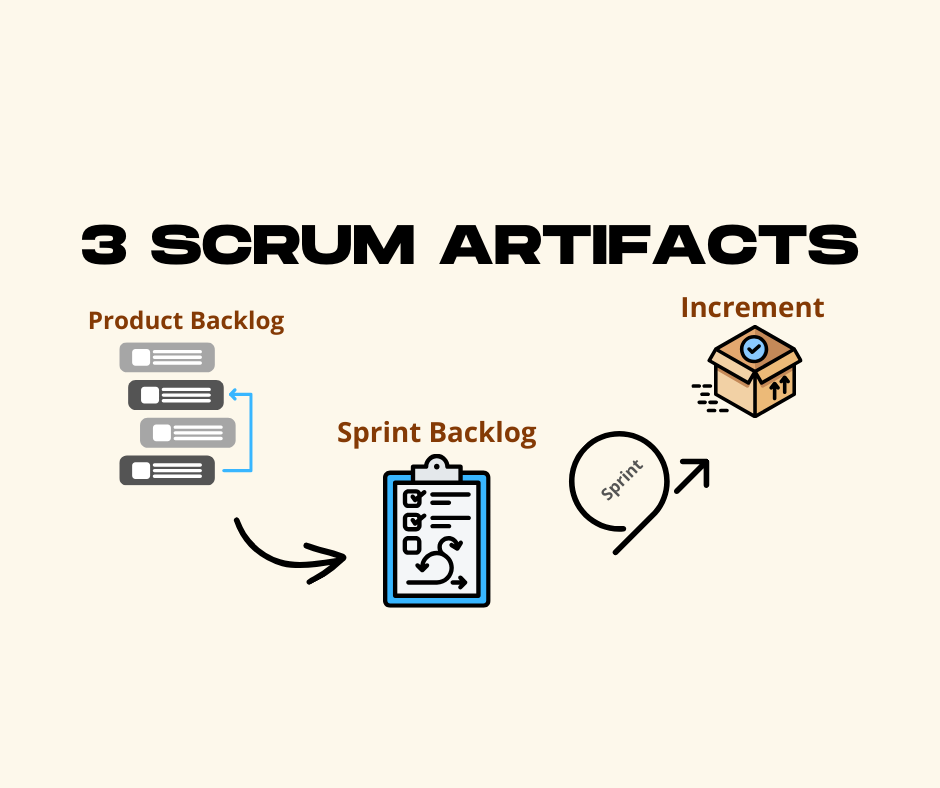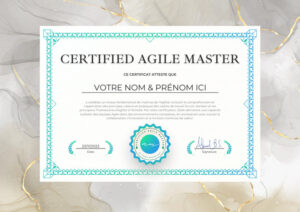In a business world marked by rapid advances and constant change, agility has become a strategic imperative. More than just a trend, the adoption of an agile management approach is emerging as an effective response to the challenges of today’s marketplace. This need for agility, accentuated by the Covid-19 health crisis, has highlighted the inadequacy of traditional organizational models in the face of uncertainty and the need for constant innovation. Thus, the concept of the“agile manager” is emerging not only as a desirable professional development, but also as a necessity for companies aspiring to sustainability and sustainable performance.
Agile management, with its roots in the early 2000s, transcends the simple framework of project management methods to assert itself as a complete managerial philosophy. By putting people at the heart of its concerns, it differs radically from Taylorism in its ability to inspire, innovate and adapt quickly to change. This pivot towards agility-centered management fosters the creation of a resilient, innovative and deeply human corporate culture.
The road to agile management is littered with challenges, learning and transformations, both individual and organizational. This article aims to unveil the contours of this journey towards agility, exploring the key skills, practices and tools that characterize an effective agile manager. Through this exploration, we invite every leader, manager and professional to reflect on the impact of agility on their role and on the culture of their organization.

Index
What is Agile Management?
Definition and Fundamental Principles
Agile management is characterized by an approach that values flexibility, rapid adaptation to change, and a focus on the human element in organizational processes. Inspired by the success of agile methods in software development, this management style is now spreading to various fields of activity, transcending the boundaries of IT to reshape the way companies think about work and innovation.
The 6 Keys to Agile Management
- Flexibility: Ability to adjust plans and strategies in response to changing market conditions and customer feedback.
- Continuous improvement: Commitment to a relentless quest to improve processes, products and services, learning from successes and failures alike.
- Collaboration: Prioritizing teamwork and transparent communication both within teams and between different levels of the organization.
- Team empowerment: Encouraging team autonomy, enabling rapid and effective decision-making at all levels.
- Customer orientation: Focus on creating value for the customer, by ensuring an agile response to their needs and expectations.
Why adopt Agile Management?
In an environment marked by increased volatility, uncertainty, complexity and ambiguity (VUCA), companies are turning to agile management to stay competitive and relevant. Agility provides a framework for anticipating change rather than simply reacting to it, for continuous innovation and for maintaining a sustainable competitive edge.
In short, agile management is much more than just a project management method. It’s a cultural and structural transformation that requires a change in mentality at every level of the company. For managers aspiring to become agile, this means developing new skills, adopting new managerial practices and committing to a shared vision of flexibility, collaboration and continuous improvement.

The Key Competencies of an Agile Manager
To effectively navigate the dynamic landscape of agile management, a manager needs to cultivate a specific set of skills. These skills enable them not only to manage projects with agility, but also to embody agile values and principles within their team and the organization.1. Ability to make sense
The first essential skill of an agile manager is his ability to give meaning to his team’s actions and projects. By focusing on the “why”, the agile manager illuminates the vision and motivates his employees, guiding them towards achieving their goals with a clear understanding of their contribution to the agile company’s overall strategy.2. Transparency
Transparency means open and honest communication about successes, failures and decisions. This transparency fosters trust and encourages an environment where employees feel valued and informed.3. Authenticity
Authenticity is crucial to building strong, meaningful relationships within the team. A true agile manager inspires respect and trust, facilitating closer collaboration and deeper commitment from team members.4. Trust and Delegation
The ability to trust and delegate is essential. It enables team members to explore new ideas and adopt innovative approaches, reinforcing their autonomy and personal responsibility.5. Active Listening
Active listening enables the agile manager to truly understand the needs, ideas and concerns of his or her collaborators, fostering an inclusive work environment where every voice is heard and valued.6. Fast and Efficient Decision Making
In an agile environment, the ability to make quick decisions, while accepting the possibility of failure, is essential. This means being decisive, while remaining flexible and open to adjustments based on feedback and results.These skills are not innate; they develop over time, through experience and a conscious commitment to continuous learning. An agile manager must be ready to evolve, adapt and grow with his or her team, fostering an environment where mistakes are seen as learning opportunities and continuous improvement is a shared goal.
Implementing Agile Management
Adopting agile management is a gradual process that requires commitment and perseverance. For organizations eager to embrace this transformation, here are the key steps and essential practices to follow.
Creating a Shared Vision
The transition to agility begins with the definition of a clear, shared vision. Agile managers work with their teams and stakeholders to develop a shared vision that emphasizes the importance of agility and its benefits for the company. This vision guides the entire organization in its quest for agility.
Promoting a Culture of Continuous Improvement
A culture of continuous improvement is at the heart of agile management. Encouraging team members to constantly look for ways to optimize processes, and to learn from their experiences, reinforces a growth- and innovation-oriented mindset.
Fostering collaboration and communication
Agile managers emphasize cross-functional collaboration and open communication. They use tools and techniques, such as daily stand-ups and Kanban boards, to facilitate information sharing and encourage productive interactions within teams.
Developing team autonomy
Autonomy is a fundamental principle of agile management. By delegating responsibility and empowering teams to make decisions, agile managers stimulate innovation and accelerate decision-making.
Setting up feedback loops
Regular feedback loops with customers and within the team are essential to ensure that the work carried out meets needs and expectations. They also enable areas for improvement to be quickly identified and plans adjusted accordingly.
Using Agile Tools and Methods
Adopting agile tools and methods, such as Scrum, Kanban, or Lean methods, helps teams organize their work more efficiently and stay focused on delivering value. Choosing the right tools adapted to the team’s specific needs is crucial to supporting this transition.
Implementing agile management is a unique journey for each organization, influenced by its culture, objectives and environment. Agile managers play a pivotal role in this process, acting as catalysts for change, guiding their teams through the challenges and opportunities that agility presents.
Challenges and Solutions in Agile Management
Adopting agile management presents a number of challenges for both managers and teams. Identifying these obstacles and exploring solutions is crucial to a successful transition to agility.
Resistance to change
Challenge: Resistance to change is often the first obstacle encountered. Entrenched habits and fear of the unknown can slow down the adoption of new working methods.
Solution: To overcome this resistance, it’s essential to clearly communicate the benefits of agility, not just in terms of productivity, but also in terms of employee well-being. Workshops, seminars and training courses can help demystify agility and show how it applies in practice.
Lack of training and skills
Challenge: Another major challenge is the lack of agile management skills or training within the team.
Solution: Investing in ongoing training is crucial. This can take the form of professional certification, coaching or mentoring. Encouraging peer learning and self-training can also be beneficial.
Difficulty maintaining team commitment
Challenge: Maintaining a high level of commitment and motivation in agile teams can be difficult, especially during periods of transition.
Solution: Set up recognition and reward mechanisms adapted to the agile context. Foster an inclusive work environment where every team member feels valued and listened to.
Priority and deadline management
Challenge: In an agile environment, managing priorities and meeting deadlines while remaining flexible can be complex.
Solution: Use agile project management tools to visualize tasks, priorities and progress. Methods like Scrum or Kanban can help structure work and adjust priorities according to feedback and needs.
Maintaining quality
Challenge: Ensure high-quality deliverables while adopting an agile approach that favors speed and flexibility.
Solution: Integrate quality practices right from the start of the development process. Encourage a culture of continuous feedback and regular testing to quickly identify and correct problems.
The transition to agile management is a complex journey that requires patience, determination and a constant commitment to improvement. By anticipating challenges and implementing appropriate strategies to overcome them, managers and their teams can reap the full benefits of agility.

The path to becoming an Agile Manager
Embracing the role of agile manager requires a commitment to continuous learning and development. Here are the key steps to cultivating the skills and mindsets needed for this transformation.
1. Education & Training
The first step towards becoming an agile manager is education. This can include attending certified agility training courses, reading reference books on the subject, and getting involved in communities of practice. Understanding the fundamental principles of agility and how they apply to management is essential.
2. Practice and experimentation
Learning by doing is essential. Implementing agile techniques on a daily basis, experimenting with different approaches and tools, and learning from these experiences, helps develop a deep understanding of what it means to be agile.
3. Interpersonal skills development
Skills in communication, servant leadership and conflict resolution are fundamental to an agile manager. Working on these interpersonal skills helps build strong, resilient teams capable of navigating change effectively.
4. Cultivating an Agile Mentality
Adopting an agile mindset – open, flexible, learning and change-oriented – is perhaps the most crucial aspect of becoming an agile manager. This often involves challenging one’s own beliefs and managerial habits to adopt a more collaborative, less hierarchical approach.
5. Support and Mentoring
The road to agility can be fraught with challenges. Seeking the support of mentors or agile coaches can provide valuable guidance, offer fresh perspectives and encourage perseverance.
6. Continuous feedback
Finally, establishing a system of continuous feedback with teams and stakeholders enables us to constantly refine managerial practices and remain aligned with Agile values.
7. Pass the Agile Master Certification
As a complement to your development path, passing a certification such as the Agile Master is a decisive step. This certification officially validates your agility skills and knowledge, testifying to your commitment and ability to apply agile principles in a managerial context. In addition, it represents a significant asset to your professional profile, enhancing your credibility with teams, partners and potential employers.
The Agile Master certification, offered at the competitive price of 59.99 euros plus VAT, is not only affordable, but also a sound investment in your professional future. It is based on a rigorous assessment of your skills and understanding of agile methodologies, positioning you as a competent and visionary leader in the field of agility.
Take the Agile Master certification today and reach a milestone in your journey as an agile manager.
Investing in this certification is a step towards recognizing your skills as an agile manager, opening the way to new professional opportunities and greater impact within your organization.
Becoming an agile manager is a journey that goes far beyond simply acquiring new technical skills; it’s a profound personal and professional journey. By actively engaging in this journey, managers can transform not only the way they work, but also the culture and performance of their organization.
Conclusion
The adoption of agile management and management 3.0 principles represents an essential strategic shift for companies wishing to successfully navigate today’s changing environment. This transformation underlines the crucial role of the agile manager, who, through his or her ability to promote collective intelligence and nurture enriching human relationships, becomes a central pillar for adaptability and innovation within his or her organization.
An agile culture, supported by a stakeholder-centric approach and responsiveness to change, builds resilient, motivated teams ready to take on tomorrow’s challenges. Ultimately, agile management and management 3.0 are not just methodologies to be applied, but a new way of thinking about leadership, crucial for sustainable success in an ever-changing world.







